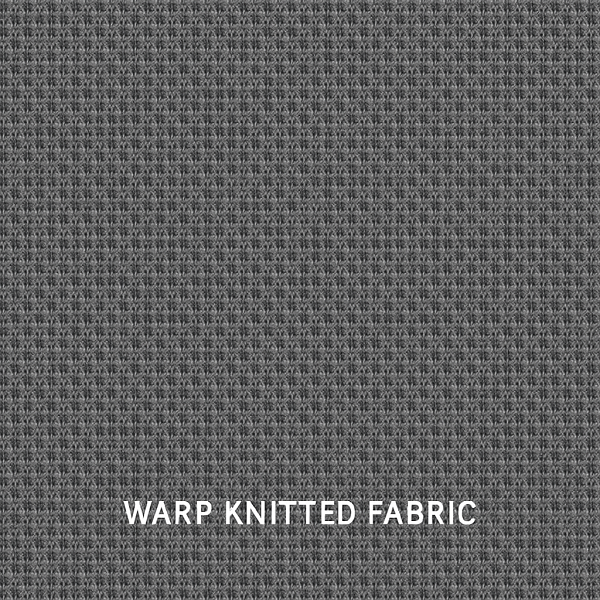Трикотажни платове с десентрансформират множество индустрии със своите уникални свойства, адаптивност и ефективни производствени процеси. От спортно облекло до промишлени приложения, тази текстилна иновация променя възприятието ни за структурата и характеристиките на тъканите.
1. Какво представлява трикотажът на основата на варта?
- Определение и структура:Трикотажът с основа е текстил, произведен чрез процеса на плетене с основа, при който нишките се движат вертикално по дължината на плата. Това е различно от вътъчното плетене, при което нишките се движат хоризонтално по дължината на плата.
- Видове трикотажни платове на основата на варта:Най-разпространените видове включват трико, рашел и милане, всеки от които е предназначен за специфична крайна употреба.
Характеристики:
- Висока стабилност на размерите
- Ниско свиване
- Отлична дишаемост
- Бърза производствена скорост
Използван материал: Може да бъде изработен от синтетични влакна като полиестер и найлон или от естествени влакна като памук и бамбук.
2. Ключови предимства на тъканите от валцово плетиво
- Здрави и издръжливи: Трикотажни платове с десенса изключително здрави и са идеални за взискателни приложения като спортни облекла и геотекстил.
- Запазване на формата:Благодарение на вертикалната си структура на бримка тя запазва формата си по-добре от много други тъкани.
- Бързо изсъхване:Отворената структура позволява бързо отвеждане на влагата, което я прави идеална за спортни облекла и облекло за дейности на открито.
- Устойчивост на мачкане:Материята е устойчива на мачкане, което я прави подходяща за пътнически дрехи и униформи.
- Икономическа ефективност:Високата скорост на машините за плетене на варак намалява производствените разходи, като същевременно запазва качеството на продукта.
3. Прилагане на валцови трикотажни платове в различни индустрии
Производство на облекло:
- Спортно облекло:Дишането, еластичността и издръжливостта му го правят основна материя за спортни облекла.
- Бельо:Фините трикотажни платове, като трико, са меки и еластични.
- Бански костюми:Широко се използват устойчиви на хлор тъкани.
- Домашен текстил: Трикотажни платове с десенчесто се използват за завеси, интериорна декорация и спално бельо, тъй като са красиви и лесни за поддръжка.
- Автомобили:Трикотажните платове се използват в калъфите и облицовките на автомобилните седалки за осигуряване на комфорт и издръжливост.
- Здравеопазване:Използва се в бинтове, подложки и хигиенни продукти поради меките си и щадящи кожата свойства.
- Промишлени и технически приложения:Благодарение на своята здравина и структурни предимства деформационните трикотажни платове се използват за армиране, филтриране и геотекстил.
4. Устойчивост и плетени тъкани на основата на варта
- Влакна, които могат да се рециклират:Днес много плетени платове се произвеждат от рециклирани синтетични влакна.
- Ниско генериране на отпадъци:При плетенето се получават много малко отпадъци от тъкани в сравнение с тъкането.
- Енергийна ефективност:Машините за плетене на основата на деформации използват по-малко енергия от традиционните тъкачни машини, което допринася за по-екологично производство.
5. Бъдещи иновации в плетените тъкани на основата на варта
- Интелигентен текстил:Интегрирането на проводящи прежди позволяватрикотажни платове на основата на вартада се използват в носимата електроника и устройствата за наблюдение на здравето.
- 3D плетене:Усъвършенстваните машини вече могат да произвеждат триизмерни структури от плетени платове, което разширява възможностите за дизайн и изпълнение.
- Устойчивост:Изследванията са насочени към прежди на биологична основа и производство в затворен цикъл, което прави плетените на основата на варта тъкани по-екологични.
- Персонализация и дигитализация:Благодарение на технологичния напредък деформационните трикотажни платове вече могат да се проектират със специфична якост на опън, порьозност и еластичност за персонализирани промишлени приложения.
Деформационното плетиво е крайъгълен камък на съвременното текстилно производство, предлагайки ненадмината гъвкавост, здравина и иновации. Приложенията им обхващат широк спектър от сектори, включително мода, автомобилостроене, здравеопазване и технически текстил.

